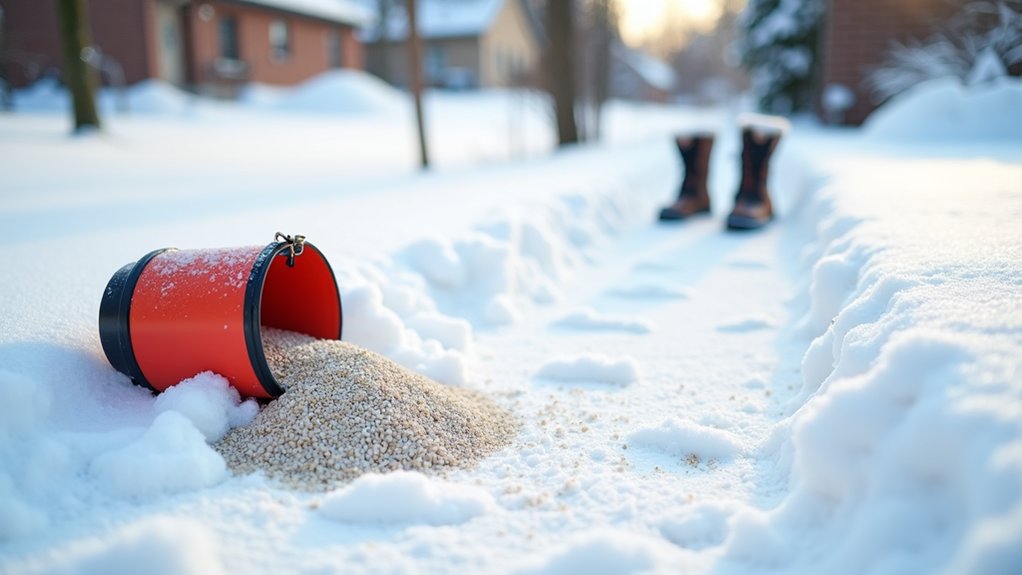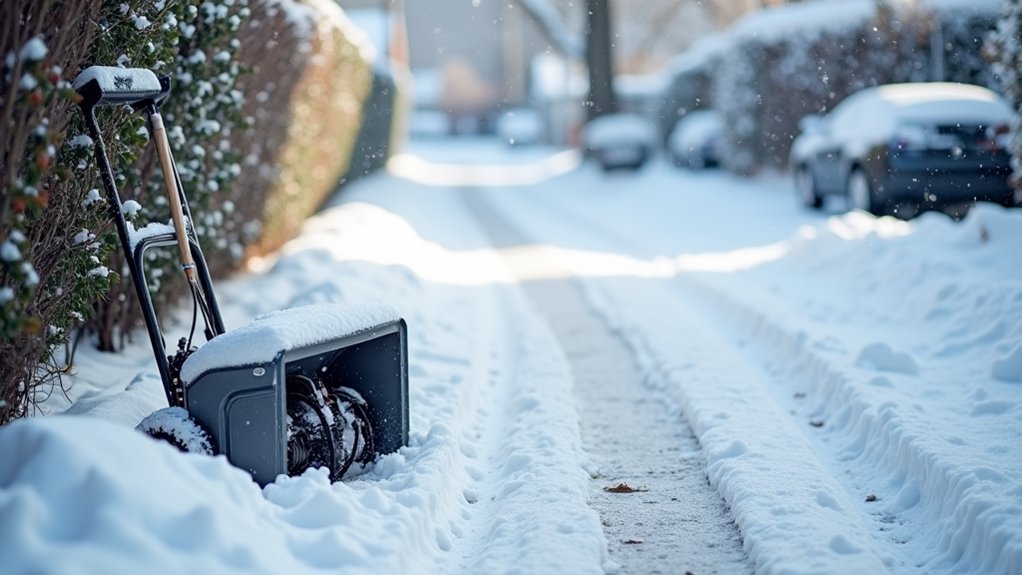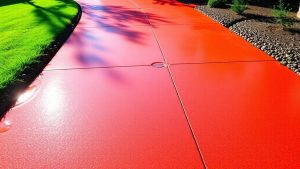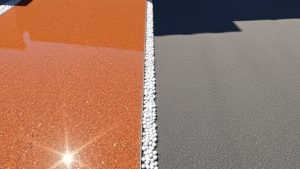To use kitty litter for traction on a slippery driveway, evenly spread it over icy patches for better grip. Concentrate on areas where vehicles are stuck for quick assistance. Mixing kitty litter with sand can improve traction on compact ice. Remember to check and replenish the litter regularly for best results. While kitty litter is useful, there are other tips and methods that can enhance winter safety and performance.
Table of Contents
ToggleKey Takeaways
- Evenly spread cat litter over slippery patches to improve traction on your driveway.
- Focus on areas around stuck wheels to help regain grip.
- Combine cat litter with sand for better effectiveness on icy surfaces.
- Use a shovel or spreader for an even application.
- Regularly check and top up the cat litter to keep its traction benefits throughout winter.
Benefits of Using Kitty Litter for Traction
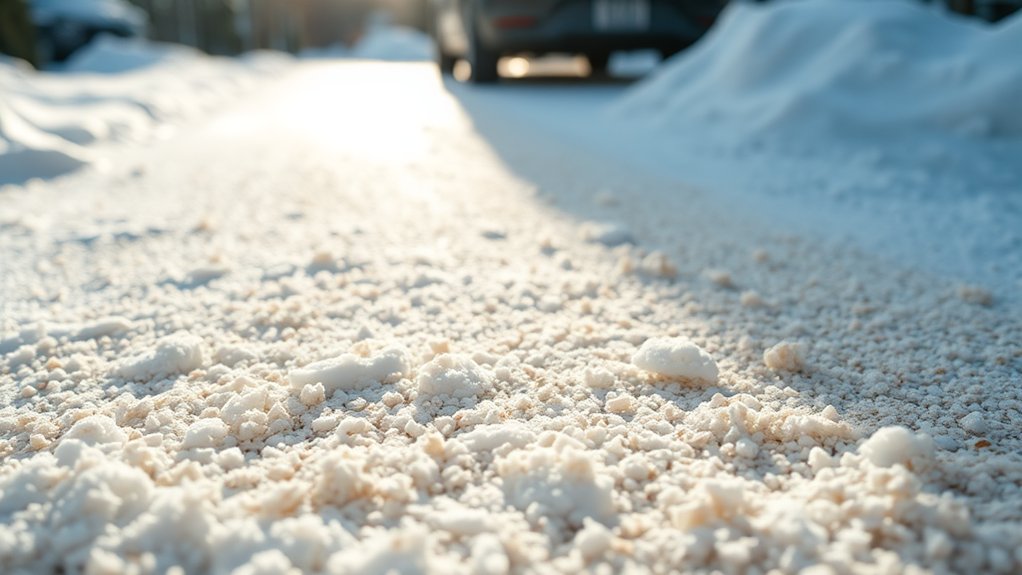
When winter storms arrive and icy conditions take hold, using kitty litter for traction can be incredibly effective. It provides immediate grip on slippery surfaces, helping you regain control of your vehicle. Its gritty texture enhances friction, making it useful on slushy or icy ground. Additionally, kitty litter absorbs some moisture, further improving traction. Unlike rock salt, it’s non-corrosive, so it won’t damage your surfaces or harm your pets. Kitty litter is usually readily available in your home, making it a convenient and cost-effective solution. Both options have situational effectiveness, ensuring you’re prepared when the weather turns hazardous. You can sprinkle it on driveways, pavements, and keep some in the car for emergencies, making it a versatile item in your household.
Limitations of Kitty Litter for Winter Traction
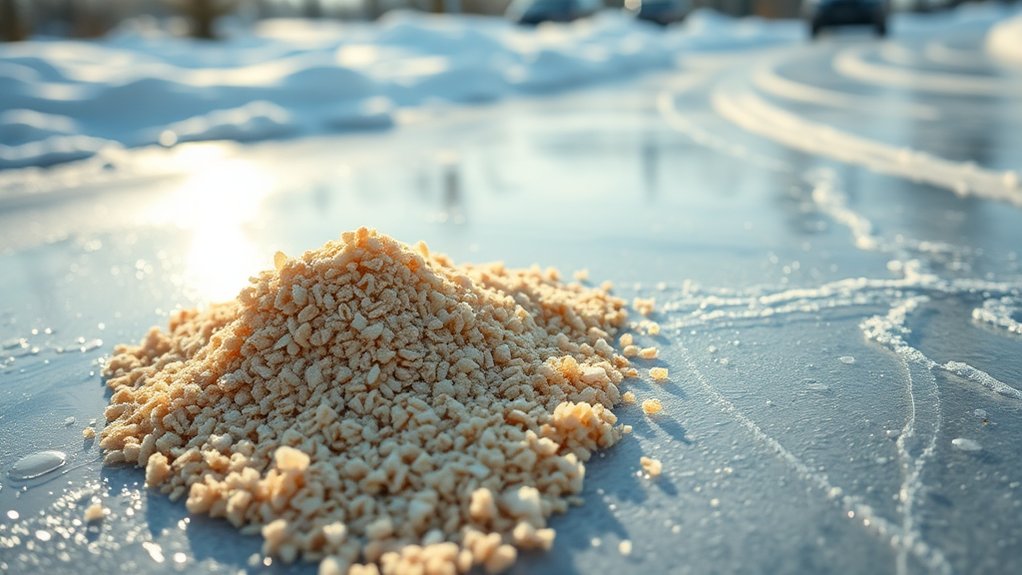
While kitty litter can provide quick traction on icy surfaces, it has several drawbacks that limit its effectiveness.
Firstly, it offers only short-term traction, as it quickly loses its grip when mixed with water or snow. It also struggles to provide adequate grip on black ice, making it unreliable in certain conditions. Unlike ice melts, kitty litter can’t melt ice or lower the freezing point. Additionally, disposing of used kitty litter can be problematic and may lead to environmental concerns. Moreover, its effectiveness as a traction agent is limited compared to specialized products that are designed specifically for icy surfaces.
Lastly, its stickiness can make cleanup a hassle, making it a less practical long-term solution for winter traction.
Comparison With Other Traction Materials
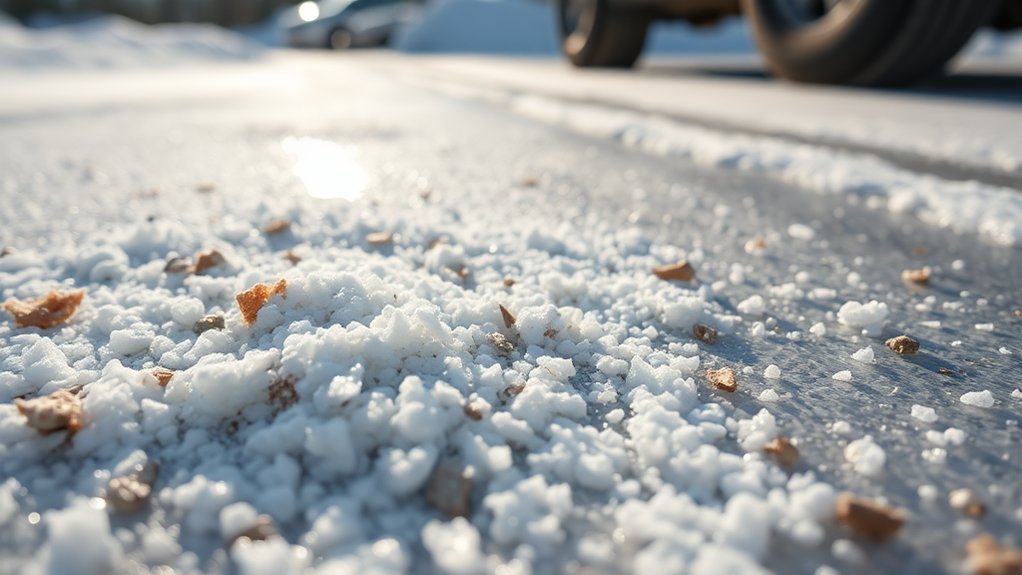
There are several options for improving traction on icy surfaces, each with its pros and cons compared to kitty litter.
While kitty litter is non-corrosive and pet-friendly, it can be messy and isn’t as effective as specialised products like ice melt or Walk On Ice. Rock salt is effective for melting ice but can be harmful to pets and the environment.
Sand can provide some traction but may struggle on compacted ice.
Traction Magic is a biodegradable alternative that offers excellent grip without the mess.
Application Techniques for Kitty Litter on Driveways
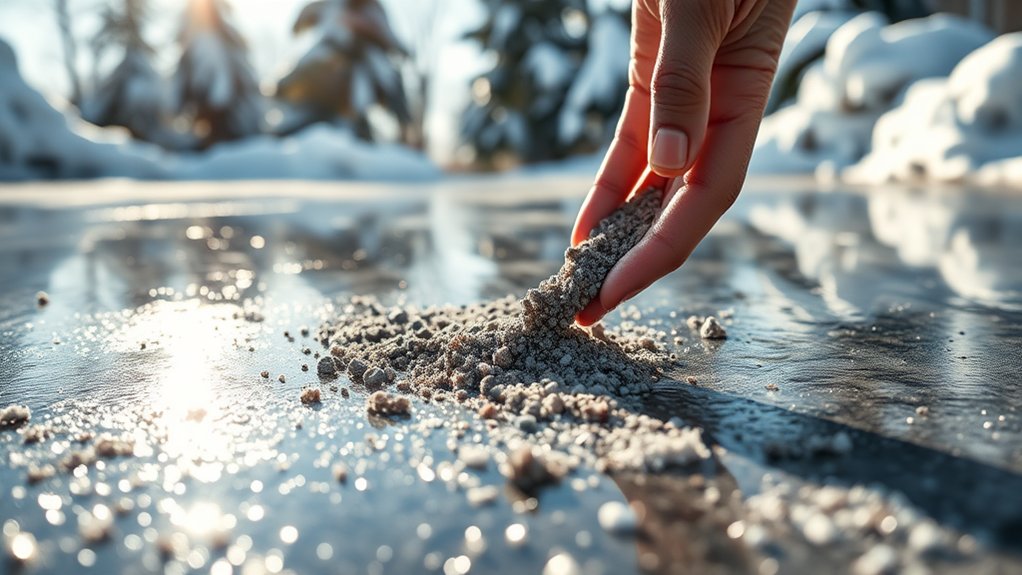
When applying kitty litter on your driveway, ensure it’s evenly spread over slippery areas for optimal traction.
If your tyres get stuck, concentrate the litter around those spots to help regain grip.
Mixing kitty litter with sand can enhance its effectiveness, providing better control on icy surfaces.
Evenly Distribute Litter
To improve traction on your driveway during icy weather, it’s important to evenly distribute kitty litter. Start by clearing any loose debris to ensure proper adhesion of the litter.
Opt for non-clumping clay litter for optimal grip.
- Use a shovel or spreader for an even application.
- Target high-traffic areas and particularly slippery spots.
- Apply a thin, uniform layer to prevent a messy buildup.
- Regularly check and replenish the litter to maintain effectiveness.
- Consider eco-friendly options to minimise environmental impact.
Target Stuck Tires
If your vehicle’s tyres are stuck, using cat litter can be an effective way to regain traction.
Start by clearing away any snow or ice around the tyres to create more space. Then, pour a generous amount of cat litter in front of and behind the stuck tyres to improve grip.
If you can, sprinkle some under the tyres, concentrating on the contact area. Gently rock the vehicle between drive and reverse to encourage movement, but avoid aggressive spinning.
Keep an eye on the condition of the litter—replace any that’s soaked and check your progress. If necessary, combine shovelling with the litter application to expose more surface area and improve your chances of getting free.
Combine With Other Aids
Combining cat litter with other traction aids can significantly improve your vehicle’s grip on icy driveways.
Here are some effective combinations and techniques to consider:
- Sprinkle cat litter first for immediate traction on clear ice.
- Layer salt or a commercial ice melt over the cat litter for ongoing melting action.
- Mix cat litter with sand for a good balance of grip and absorption in slushy conditions.
- Keep an eye on the mixture and reapply cat litter and salt after snowfall to maintain effectiveness.
- Avoid excessive use of cat litter to prevent clumping and mess.
Environmental and Safety Considerations
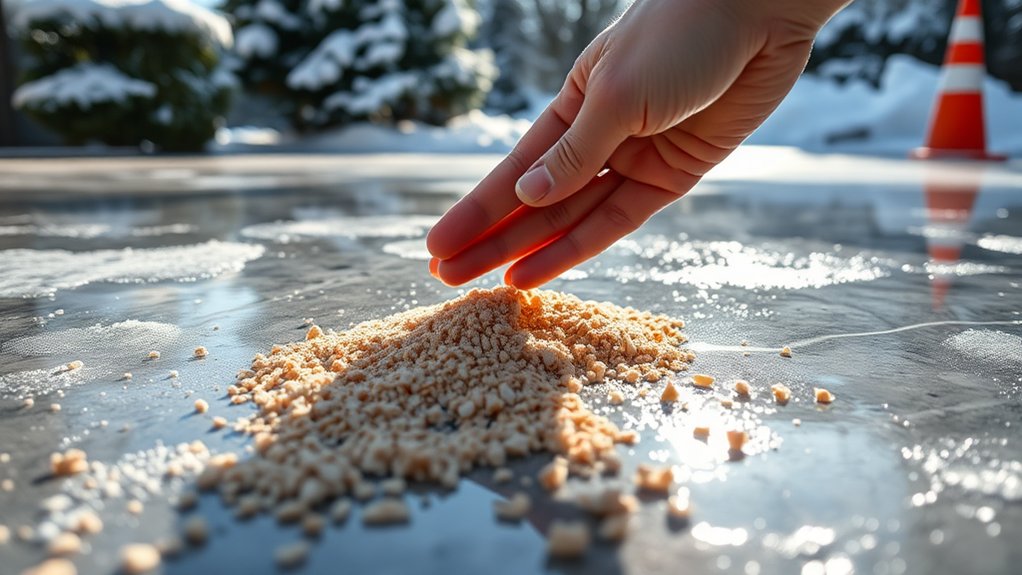
Using kitty litter for traction can be effective, but it’s important to consider the environmental and safety issues involved.
Clay-based and silica litters can damage ecosystems due to strip mining and their non-biodegradable nature. Instead, choose natural, biodegradable alternatives to lessen your environmental impact.
There are also safety concerns: wet litter can create a slippery surface, increasing the risk of falls. Some litters may release harmful chemicals that can affect both people and pets.
To minimise these risks, use kitty litter sparingly and ensure proper cleanup to avoid blocking drains. By making thoughtful choices, you can improve safety and reduce your ecological footprint when using kitty litter on a slippery driveway.
Cost and Availability Insights
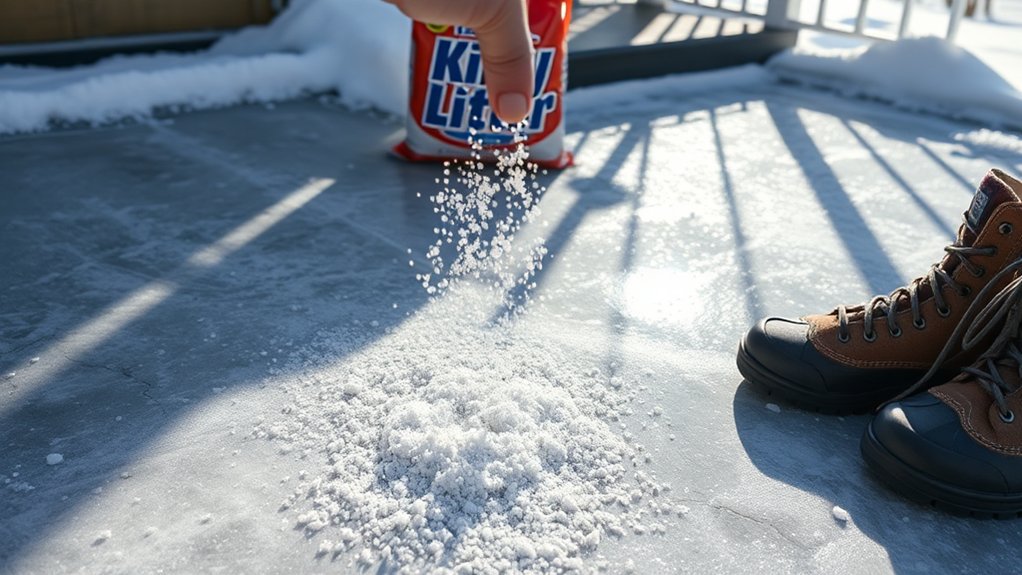
Using kitty litter for traction is both cost-effective and readily available. Here are some key points to consider:
- Initial Cost: Kitty litter tends to be cheaper than specialised traction products.
- Buying in Bulk: Purchasing in bulk can reduce costs, but it may not be practical for smaller driveways.
- Online Shopping: Kitty litter is easily found on websites like Amazon.
- Local Stock: Most pet shops and supermarkets stock kitty litter.
- Reapplication Costs: Frequent use may lead to higher long-term expenses, affecting its overall effectiveness.
While kitty litter can be useful, think about whether it’s the best choice compared to alternatives like sand or dedicated traction agents for consistent results.
Frequently Asked Questions
Can Kitty Litter Be Used in Extremely Cold Temperatures?
Using kitty litter in very cold weather isn’t particularly effective. It can lose its grip and may get stuck in the ice. Instead, consider alternatives like Traction Magic for better results in severe conditions.
How Much Kitty Litter Should I Keep in My Car?
Imagine you find yourself stuck in a winter storm without any preparation. Keeping a small bag of cat litter (2–5 kg) in your car can enhance your emergency readiness, offering much-needed traction when you need it most during winter.
Is There a Specific Type of Kitty Litter Better for Traction?
For traction, non-clumping cat litter is usually your best bet. Brands like Tidy Cats offer eco-friendly options that are safe for both pets and the environment. Always assess their effectiveness based on your specific needs.
Can Kitty Litter Be Harmful to Children or Pets?
Kitty litter isn’t just harmless; it can be dangerous for children and pets. To ensure safety, keep litter out of reach, supervise playtime, and maintain strict hygiene practices. For example, if a child or pet ingests litter, it can lead to health issues. Always prioritise safety in your home.
How Do I Clean up Kitty Litter After Use?
After using kitty litter, sweep it up with a broom and gather it in a dustpan for disposal. It’s best to use biodegradable bags to lessen your environmental impact when getting rid of the litter.
Conclusion
Using kitty litter for traction on a slippery driveway can be as effective as throwing a lifebuoy to someone in trouble. It’s a practical and affordable solution, but be mindful of its limitations and consider alternative options if conditions worsen. Apply it carefully to ensure safety for both yourself and the environment. With the right approach, you can tackle those icy patches confidently, keeping your driveway usable throughout the winter. So, grab that kitty litter and sort those slippery spots!
Be proactive in protecting your driveway from cold weather cracks by learning essential sealing techniques that could save you costly Read more
Achieve a pristine tarmac driveway this winter—discover the best snow removal methods that will keep your surface safe and clear.
Uncover the ideal driveway material for frigid temperatures and discover which option can withstand winter's harshest challenges effectively.

